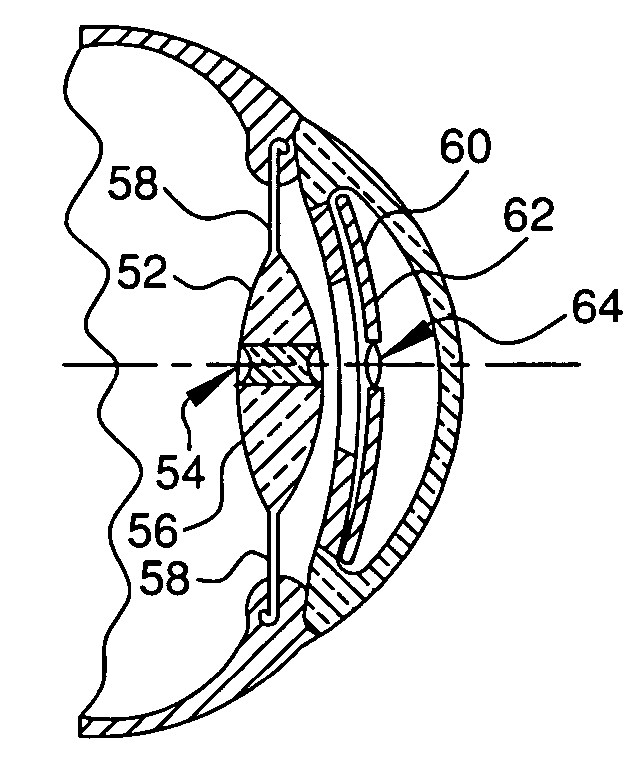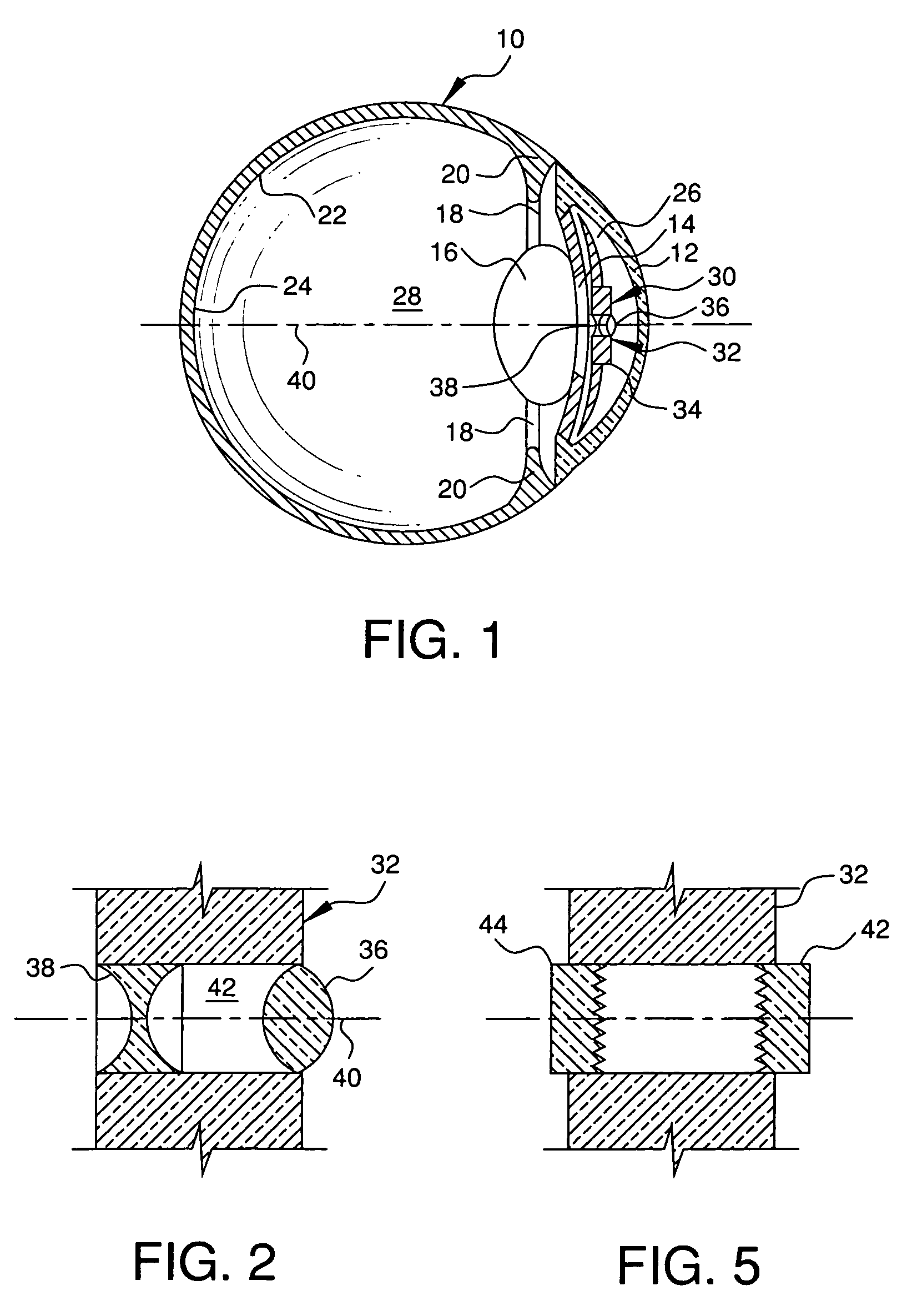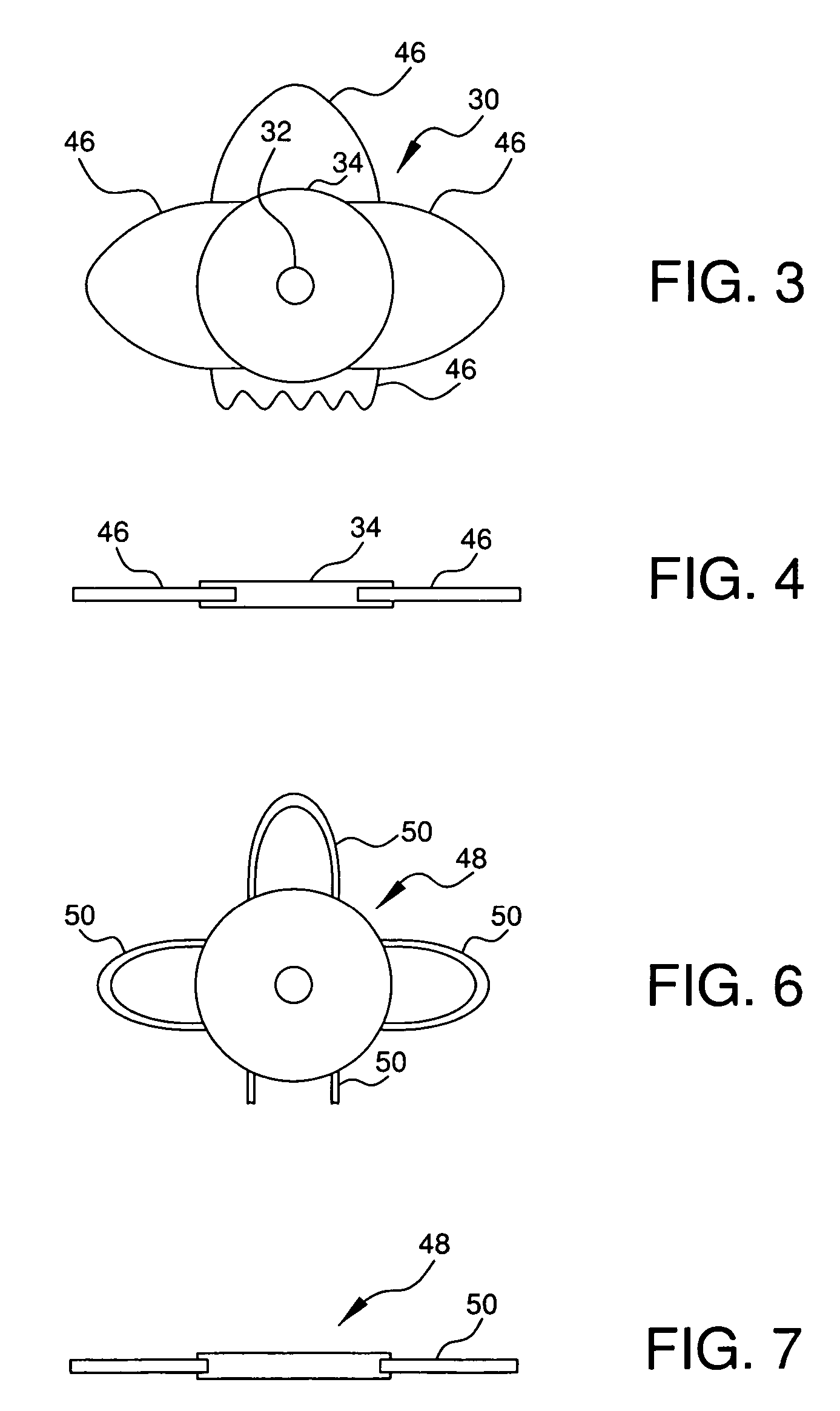Bifocal intraocular telescope for low vision correction
- Summary
- Abstract
- Description
- Claims
- Application Information
AI Technical Summary
Benefits of technology
Problems solved by technology
Method used
Image
Examples
embodiment
of FIG. 8
[0040]FIG. 8 shows a second embodiment of the present invention. In this embodiment, the natural lens of the eye is replaced with an artificial lens 52. The artificial lens 52 has a central portion 54, a peripheral portion 56, and is fastened into the posterior chamber by haptics 58. The peripheral portion 56 of the lens 52 is a generally converging lens, much like the natural lens which it replaces. The central portion 54, however, is a diverging lens with a high negative refractive index. An anterior implant 60 is located in the anterior chamber of the eye. The anterior implant 60 has a transparent peripheral portion 62 and a central portion 64. The central portion 64 is a lens with a high positive refractive index. The anterior implant central portion 64 is aligned with the artificial lens central portion 54, forming a telescope for enhancing low vision. The peripheral portion 62 has the same characteristics as peripheral portion 34 described above regarding the first em...
PUM
 Login to View More
Login to View More Abstract
Description
Claims
Application Information
 Login to View More
Login to View More - R&D
- Intellectual Property
- Life Sciences
- Materials
- Tech Scout
- Unparalleled Data Quality
- Higher Quality Content
- 60% Fewer Hallucinations
Browse by: Latest US Patents, China's latest patents, Technical Efficacy Thesaurus, Application Domain, Technology Topic, Popular Technical Reports.
© 2025 PatSnap. All rights reserved.Legal|Privacy policy|Modern Slavery Act Transparency Statement|Sitemap|About US| Contact US: help@patsnap.com



